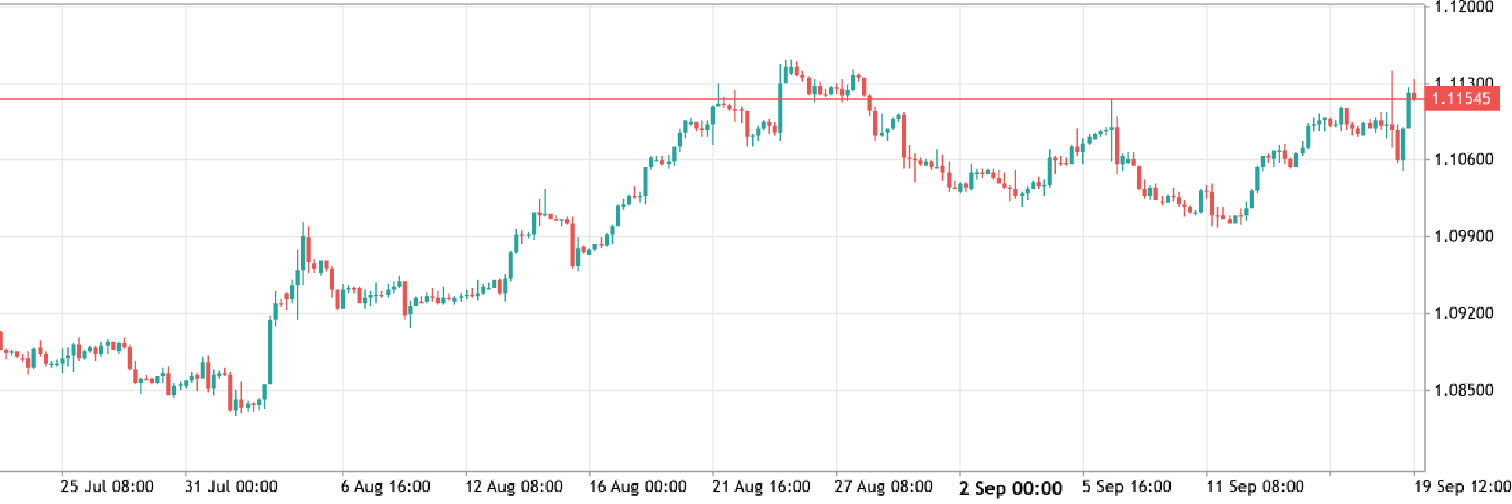
Traders love giving unique names to chart patterns, and one of the most striking is the “Dragon.” While we don’t know exactly who first associated the Chinese dragon with a candlestick chart, the name has stuck. Many traders still use this pattern today, building strategies around it.
In this article, we’ll go over the key features of the “Dragon” pattern, discuss whether it’s worth using, and explain how to trade it effectively.
Article content
How to Identify the “Dragon” Pattern?
There’s an unwritten rule among traders: the more complex a pattern, the harder it is to profit from it. So, what makes a pattern complex? If the number of points and its length are the main factors, the “Dragon” pattern ranks among the more intricate ones. It consists of five key points: the “head,” two “paws,” the “hump,” and the “tail.” Take a look at this chart:
Like most patterns, the “Dragon” can signal either bullish or bearish movements. The rules for both scenarios are mirrored, so for simplicity, we’ll focus on a bullish example.
Here are some important things to note:
- The “Dragon” is a relatively complex pattern that doesn’t appear very often.
- You won’t be able to see the entire pattern when you open a trade. Typically, you’ll be entering at the level of the second “paw.”
- The second “paw” is often lower than the first. Traders have different views on this – some prefer them at the same level, while others think the first paw should be lower. Experiment to find which approach works best for you.
Another key feature of the “Dragon” is a clear trendline between the “head” and the “hump”:
This trendline is where you should begin your search for the pattern.
How to Trade the “Dragon” Pattern
Now that you know how to spot the “Dragon” on a chart, let’s dive into how to trade it. The trading process is straightforward because it follows a clear set of rules:
- The “Dragon” is a reversal pattern, so you’re trading based on a trend reversal or a significant price rebound.
- Extend the line between the “head” and the “hump.” This creates a slanted resistance line. Enter a buy trade when the price breaks through this line.
- Set your Stop-Loss just below the second “paw.”
- There are two common trading approaches to setting a Take-Profit target:
-
- Conservative style: Place your Take-Profit at the level of the “hump.”
- Aggressive style: Aim for the level of the “head.” However, this may require more patience as it could take longer for the price to reach this target.
Visually, the trading strategy based on the “Dragon” pattern looks as follows:
Trading Nuances
Every trader knows there’s no perfect strategy. Here are some challenges you might face when using the “Dragon” pattern:
1. Rarity. The “Dragon” is relatively uncommon. Below is a chart of the EUR/USD pair on a 4-hour timeframe, spanning nearly two months. Count how many times you can spot a clear “Dragon.”
2. Timeframe. The “Dragon” works best on medium and large timeframes, like 1H or 4H. It’s not suitable for scalpers and challenging for day traders.
3. Confusion. The “Dragon” can sometimes be confused with other patterns. If it’s confused with similar reversal patterns, such as the “Head and Shoulders” pattern, it’s not a significant issue. However, the “Dragon” can sometimes resemble continuation patterns like the “Flag” or “Three Indians,” which, as is known, signal the continuation of a trend rather than a reversal. In such cases, you may encounter conflicting signals that simultaneously point in both the bullish and bearish directions.
Solution: Building a Robust Strategy
Obviously, the most important nuance is the last one. The biggest challenge you’ll face with the “Dragon” pattern is its potential for misinterpretation. While patterns are valuable tools, relying solely on them for trade decisions is a recipe for trouble.
Think of patterns as confirmation signals, not standalone predictors. This is where robust strategy development comes into play.
The best way to leverage the “Dragon” is to use it to validate your existing trading hypotheses formed through other methods. These methods can vary depending on your trading style, but some popular choices include:
- Volume analysis. Analyzing trading volume alongside the pattern can strengthen your conviction.
- Buyer-seller ratio. Understanding the market sentiment through this ratio can add weight to the reversal signal.
- Fundamental analysis. Fundamental factors like economic data releases can provide further context to the potential trend change.
By incorporating these additional methods, you can integrate even complex patterns like the “Dragon” effectively, boosting your overall trading strategy’s success.










